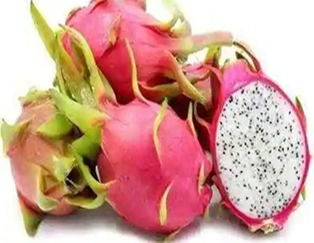

8th July 2022 (6 Topics)
Context
Addressing a National conclave on the fruit, Centre has decided to promote the cultivation of dragon fruit, known as a “super fruit” for its health benefits.
Background
- The dragon fruit was introduced to home gardens in India in the
- The low maintenance and high profitability of dragon fruits has attracted the farming community throughout India.
- Considering the cost effectiveness and global demand for the fruit due to its nutritional values, its cultivation can be expanded in India.
- This exotic fruit is cultivated in 3,000 hectares in India and the plan is to increase cultivation to 50,000 hectares in five years.
- India is now importing about 15,491 tonnes of dragon fruits but has potential to match the production of China.

About
- The dragon fruit (Hylocereus undatus) is indigenous to the Mexico.
- It is a member of the cacti family.
- It is also known as ‘Pitaya’, ‘Pitahaya’, strawberry pear, noblewoman and ‘queen of the night’ throughout the world.
- It is now produced mainly in Vietnam, helping it to boost its economy.
- Mizoram tops among the States that cultivate this fruit in India.
- The red and pink varieties of the fruit give better yield.
- It costs approximately about 400 per Kg in India.
Climatic Condition
- It is hardy and grows in diverse climatic conditions with varied soils, especially in the semi-arid and arid regions of India.
- It prefers slightly acidic soil and can tolerate some salts in soil too.
- Flowering and fruiting of dragon fruits coincide with the monsoon season in India (June to November).
Features
- Its flowers are hermaphrodites (male and female organs in the same flower) in nature and open at night.
- The plant sustains yield for more than 20 years, is high in nutraceutical properties (having medicinal effects) and good for value-added processing industries.
- It is a rich source of vitamins and minerals.
- The fruit is considered good for diabetic patients, low in calories and high in nutrients like iron, calcium, potassium and zinc.
Advantages for India
- There has been a steep increase in dragon fruit cultivation in Maharashtra, Karnataka, Andhra Pradesh, West Bengal, Telangana, Tamil Nadu, Odisha, Gujarat and the Andaman and Nicobar Islands, as well as in many north eastern states.
- The country produces approximately 12,000 tonnes of the fruit every year.
- Other Benefits:
- Farmers will get high price for their cultivation.
- The fruit can be grown in degraded and rainfed lands.
- Farmers will get incentives under the Mission for Integrated Development of Horticulture (MIDH).
- Processing infrastructure can also be developed with the help of the Food Processing Ministry.
Government Interventions in India
- The Gujarat Government recently renamed dragon fruit as ‘kamlam’(lotus) and announced an incentive for farmers who cultivate it.
- The Haryana Government also provides a grant for farmers who are ready to plant this exotic fruit variety.
- The Government of Maharashtra has taken the initiative to promote dragon fruit cultivation in different areas of the state by providing good quality planting material and subsidies for its cultivation through the Mission on Integrated Development of Horticulture (MIDH).
More Articles


